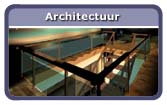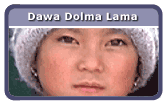|
Japan,
not a mysterious country:
Surreal but nice...
Because of the Sars trouble
in the beginning of 2003, the trip we booked to Tibet was cancelled.
We though that Japan would be a good alternative. Asia was the target
en Japan is definately something different...
We
have asked Passaat
to work out a trip for the two of us, based on our wishes and requirements.
We agreed on a proposal in the central area of Japan, visiting about
10 different locations in 3 distinct regions. The trip was arranged
in a perfect way: well prepared and with useful instructions. We
had a great holiday and we have only one remark... The country is
not as mysterious as we're used to from other trips. Life itself
is not an attraction on it's own, which is the case in for exampel
Nepal. But... we saw great and strange things as you can find below.
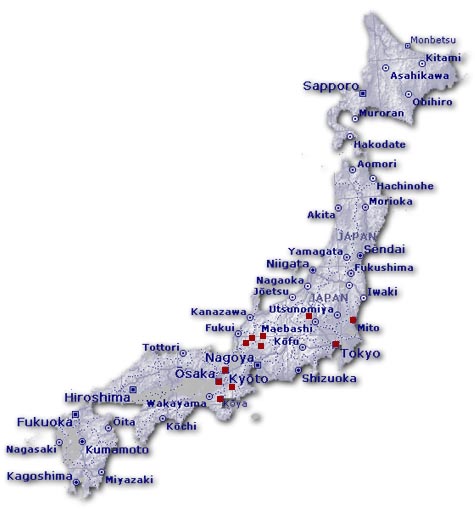
Tokyo
We flew via HongKong to Narita Airport near
Tokyo. From here we could get fairly quick to the hotel, but we
immediately saw how enormous Tokyo is... 2 centimeters on the map,
is 2 kilometers to walk, and back, at 35 degrees celsius! Although
it's hard to understand the Japanses signs, travelling via the subway
went smoothly. For me it's unbelievable that in such a modern country
almost nobody speeks English...
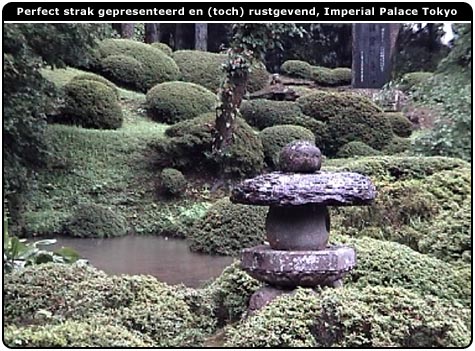
The first ryokan (traditional hotel)
was located in Asakusa in the north eastern part of Tokyo, well
situated near the museumpark of Ueno, the Asakusa Kannon temple
and the Sumo area. In the city centre you can find the Imperial
Palace, the shopping area of Ginza and the largers fishmarket in
the world.
More
pictures of Japanese gardens
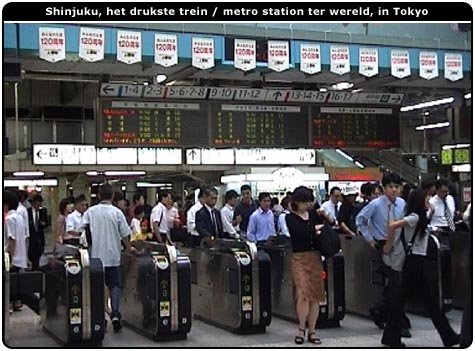


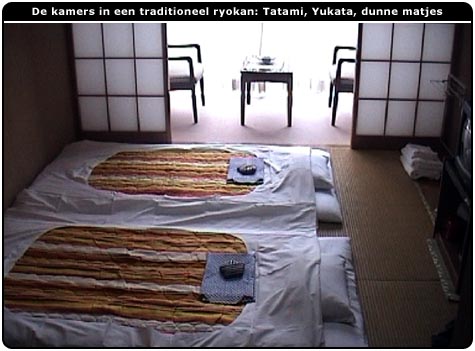
This is what a traditional room looks
like. In this kind of rooms we slept the entire holiday. Tatami
floors on which you should not walk on with your slippers (shoes
stay in the entrance). Also they have very thin matrasses and strange
blanket covers that are placed in the room after dinner.
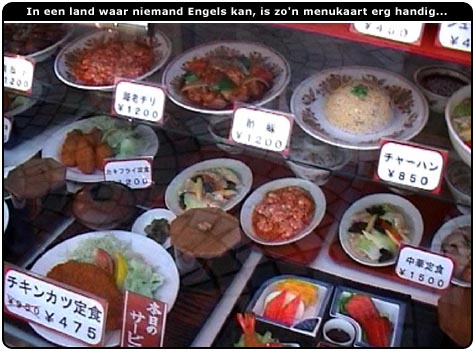
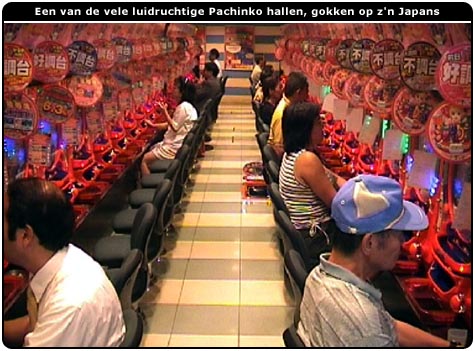
Pachinko is a strange gambling game where little iron balls are
launched and steared by the player. The goal is to have them fall
down in a small hole on the exact right time. Huge multiple story
halls with very loud music are located everywhere.
On the following pictures you see the cycle of the average tuna
in Japan: The Tsukiji fishmarket is where they come in on the harbour
side, on the other side of the huge area big filets are transported
directly to the sushibar for the most fresh food in the world...
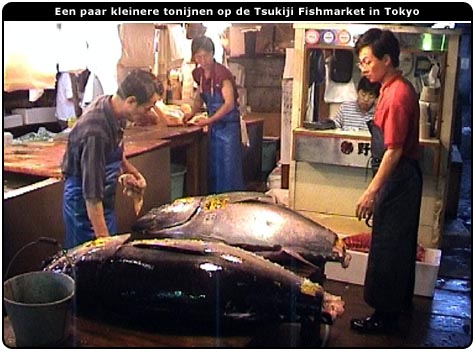

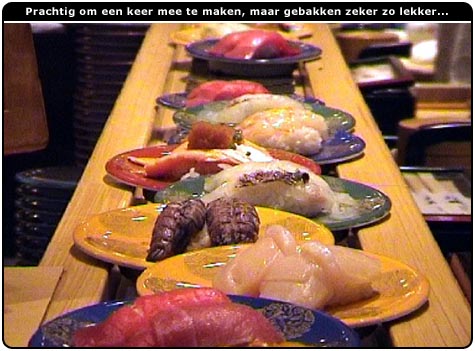
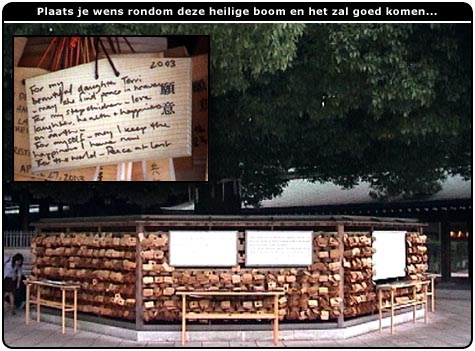
Mito
After Tokyo we went to Mito in the
north. Only one day, which is enough for this town. We went here
especially for the botanic garden with old shogun villa. A beautiful
stopover on our way to Nikko.
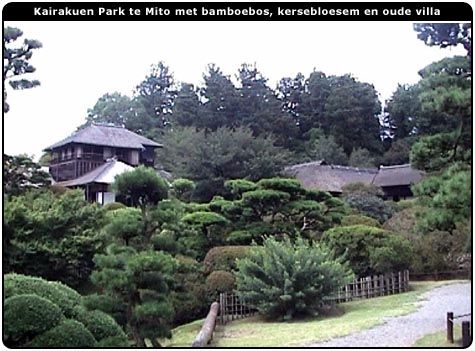
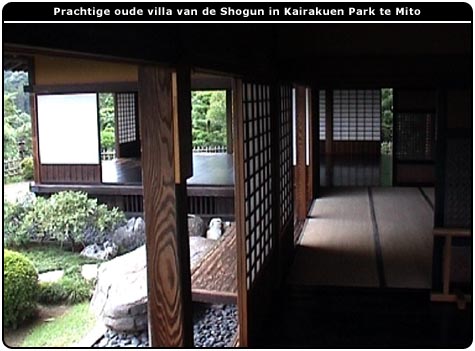
Nikko
When we arrived in Nikko it was raining,
which lasted for about a week.. This was a pitty but at least the
temperature was doable. Nikko has a beautifull park where all shrines,
gates, pagoda's and temples are located. Also for Japanse people
this is a very popular location, a one day trip from Tokio.


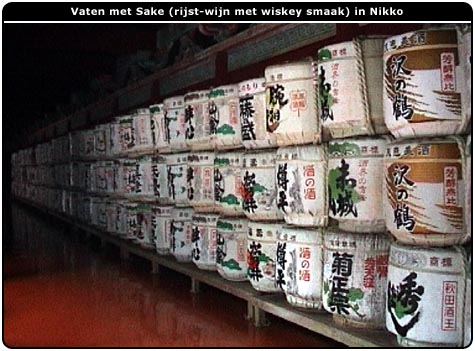
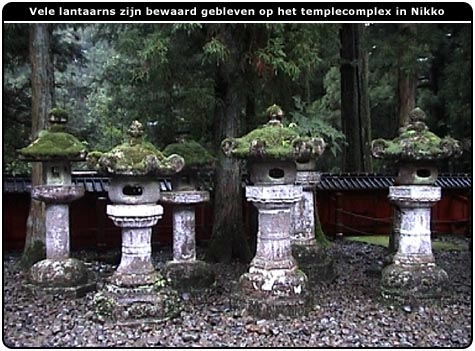
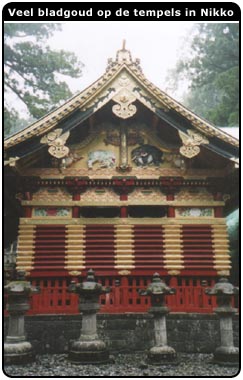 |
|
Using
todays prices for all the goldplated carvings, millions of
euro's are invested in the temples in Nikko around 1600. Expensive
and nice, but it also works great against influence of the
weather...
|
Kamikochi
The Japanese Alps are situated
in the west of Honshu Island. Beautiful surroundings, also a very
popular place for Japanses people. Actually we were the only western
people during the 5 days we spent here ! Rain all the time, not
as bad for us as for the locals, as they only have 7 holidays a
year. The picture below is taken from the famous bridge, on the
day we left the place, when the sun was shinging again...



Kamitochio
Besides the traditional ryokan, we also slept in minshuku's. It
kind of looks the same, but this is more in the house of the people
themselves. Also the food was very traditional: a lot of small dishes
mostly consisting of rice, fish and miso-soup. In the evening, but
also in the morning... The region is known for it's hot spa's (onsen)
but these were a bit too hot for us...

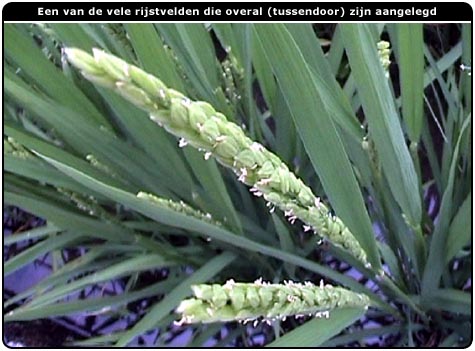
Shirakawa-go
The biggest surprise we had during the holiday
was the visit to the beautiful village of Shirakawa-go. This one
is placed on the Unesco world heritage sites list: about 130 traditional
houses with layered cane roofs. All houses are built in the same
direction (for the wind). It looks like an open-air museam, but
as it's a real village with real people it's much better than that
! We spend a night in one of them, which was very special !

It
was truly great. we walked and filmed a lot here. Interested? Here
you can find more pictures of
Shirakawa-go
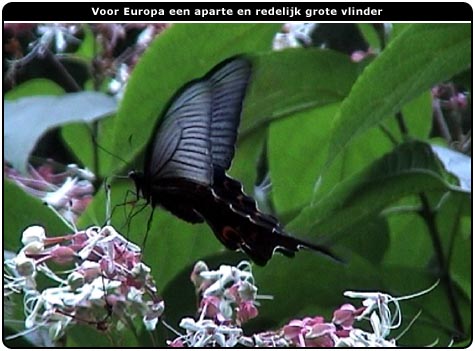
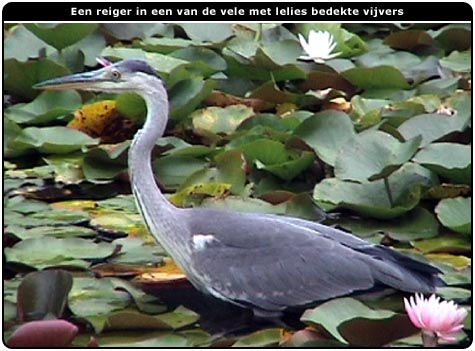
Takayama
Takayama is situated in the Gifu
prefecture, but the Hida area, a part of this prefecture, is more
known around the world. Here live the hand massaged cows which deliver
the Hida Beef. Unbelievably tender! The city of Takayama is nice
with some special places of interest, but the beef is reason enough
to go here...

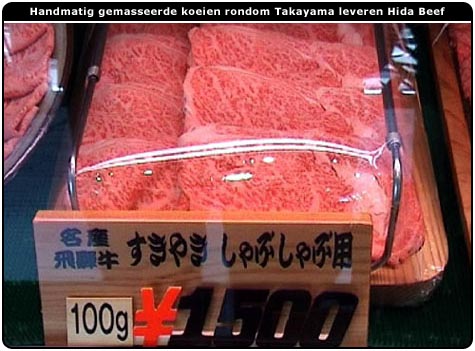
Here
you can find an overview of five different Hida Beef qualities
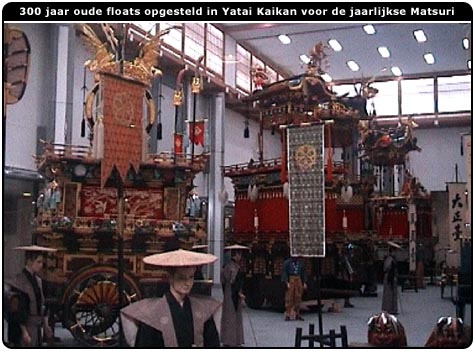
Nara
In Nara we visited another
Unesco world Heritage site. You can see it below: theTodaiji temple.
They say it's the bigges wooden building in the world (about 52x56x45
meter). Inthere you can find the biggest bronze Buddha of Japan,
about 15 meters high. A lot of the religious buildings are located
in Nara Park, where deer walk around freely.
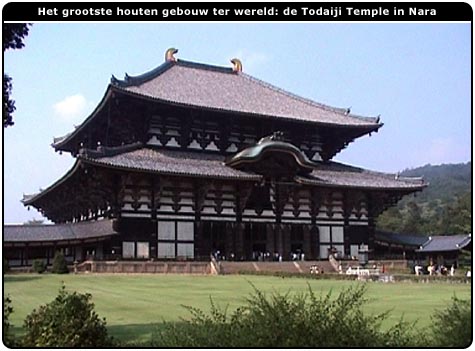
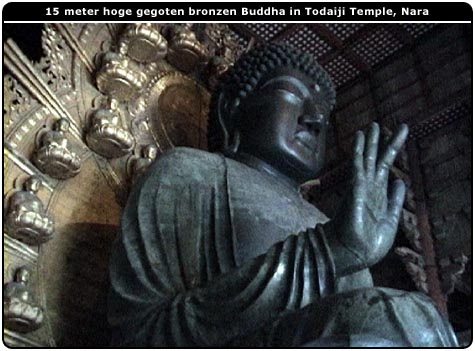
 |
|
Like
in Nepal we saw a lot of pagoda's in Japan. For the tourists
they are just called 5 story pagoda's on all the maps, which
makes them easy to recognize.
|
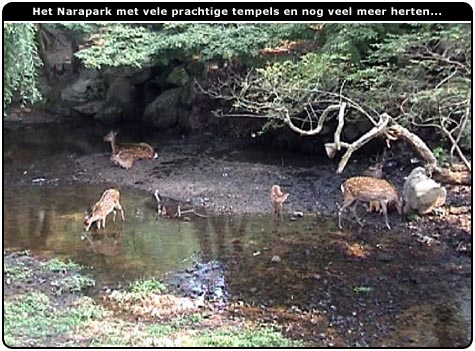
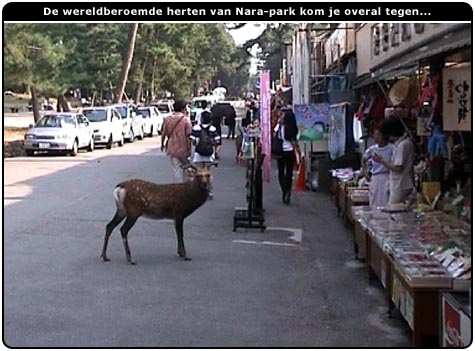
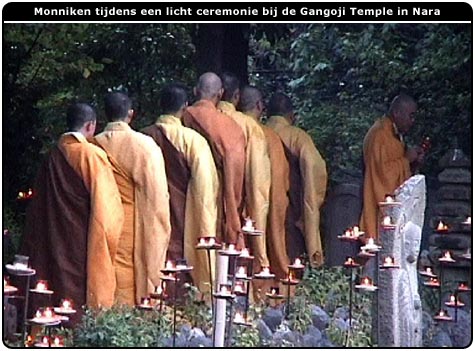

Japan is a very big country (3.500 km long,
150 million inhabitants) and in the history they were always very
independant. You can still notice this when looking at cars: it's
a market on it's own where models are created just for Japan or
Asia. Many models we saw we had never seen before. Toyota creates
limosines that are bigger than the bigges Mercedes and Daihatsu
seems to make nice little sportscars.
More pictures of Japanse cars
Koyasan
Koyasan is the religious centre of a certain Buddhist movement.
In this mountainvillage you can therefore find many monasteries,
shrines and temples. We stayed a night in a monastery and were able
to visit two impressive ceremonies. We also visited a cemitary with
10.000's of tombstones. Also very impressive.
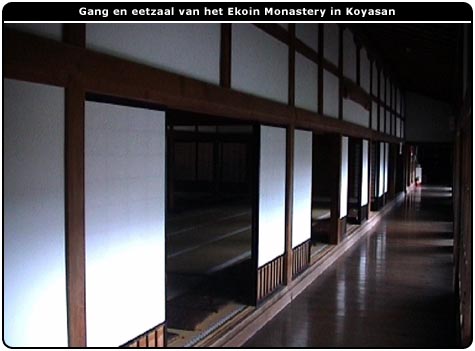
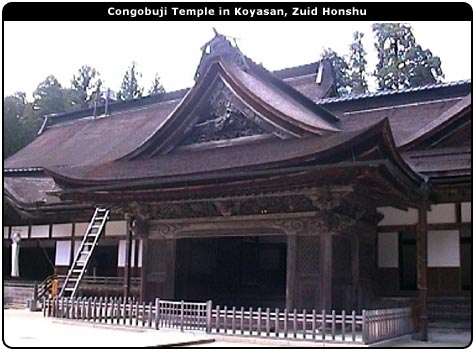
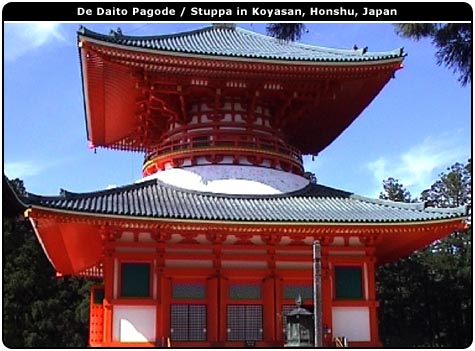
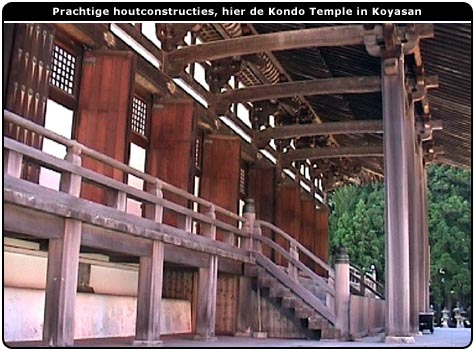
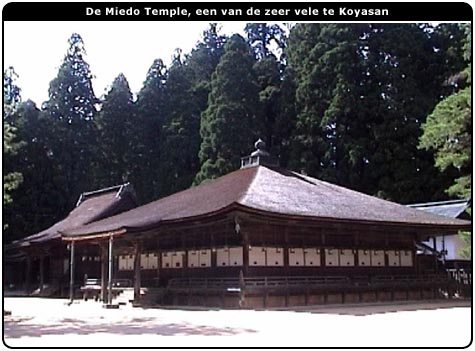
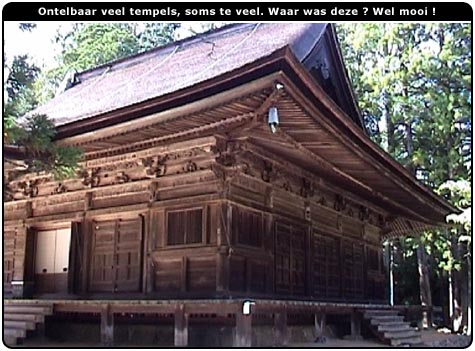

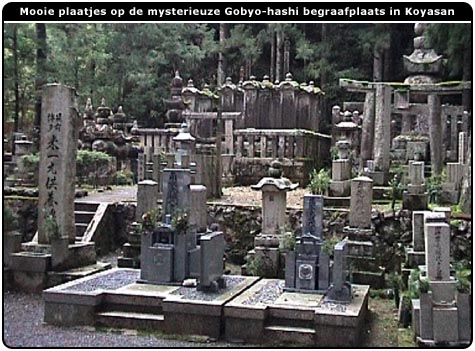
Here
you can find 15 other pictures of this semitary
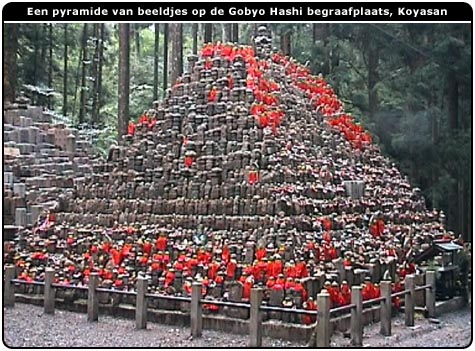
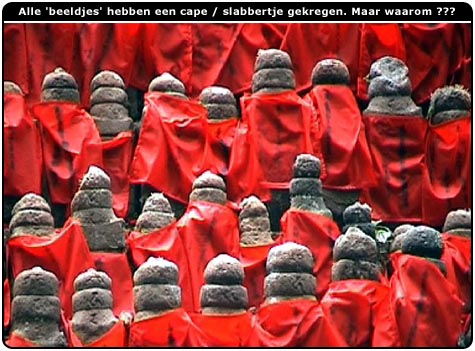
Kyoto
Kyoto is known mostly because of the convention named after it.
Not sure if that's the main reason but this place was much more
touristy than all the other places we vivites. Here we saw about
15-20 other western tourists a day, where in other places we were
the only ones for days...
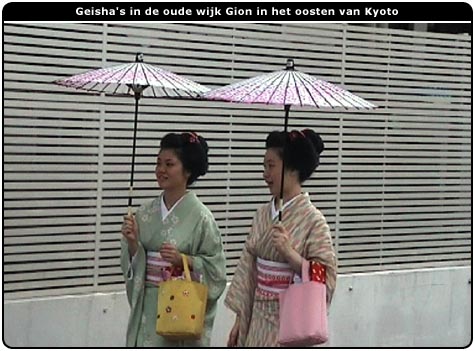
The Gion area in the eastern part
of Kyoto is known for it's perfect dinner possibilities, nice little
old streets and geisha's. In the evening when they go to their 'work'
they look even more dressed up, but of course we did not bring the
camera then...
As this was the end of a 3-week holiday we were kind of tired of
visiting all the temples so here we took it easy, also because it
was 35 degrees all day. We had relaxed breakfasts and enjoyed the
people, surroundings and excellent food !
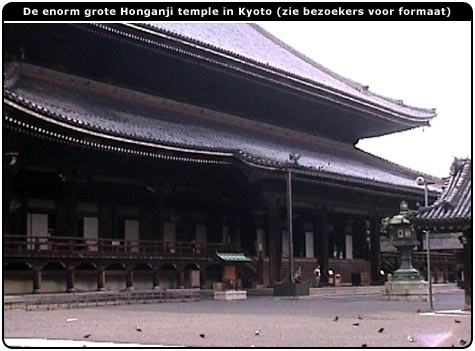
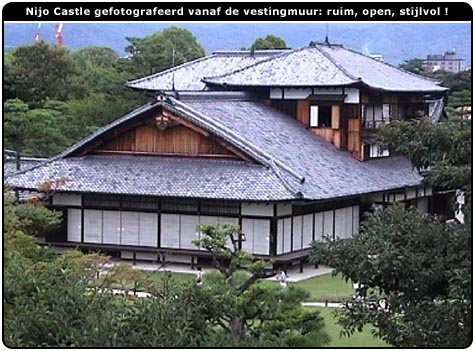
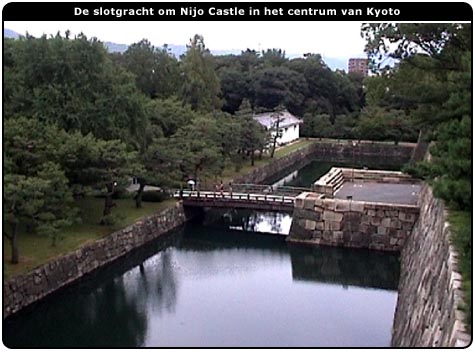
Although we saw the most strange
and unexpected situations, the trip was different than we are used
to. Not different than we expected as we did not have much time
to prepare and create an expectation. It was not the tradition-wise
culture-shock people told us about, but neither a very hip, trendy,
techy country. A bit like we're used to in some parts of Europe:
rice paddy's between the house of ll different kids and colors,
all wires above the ground and nobody who speakes English... It
reminded us a bit of Belgium...
Tokyo, Nara and Shirakawa-go definately belong to the highlights
of a trip to Japan. Of course Japan is a very expensive country,
but as the euro now (September 2003) has a very profitable exchange
rate, the trip was about 30% cheeper than it would be a couple of
years ago.
<
Travel story Uganda
|
